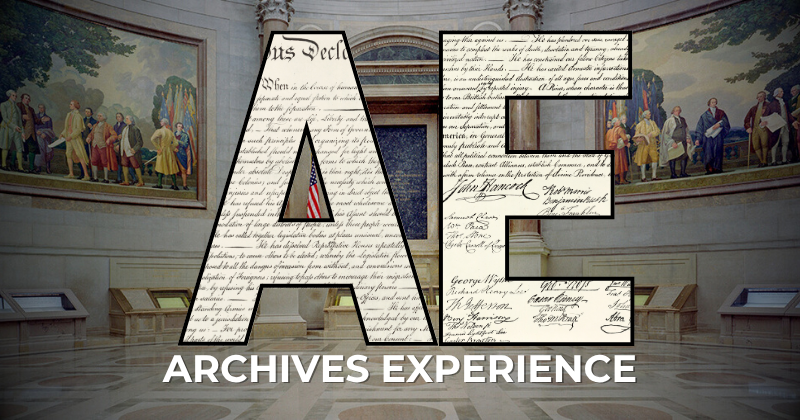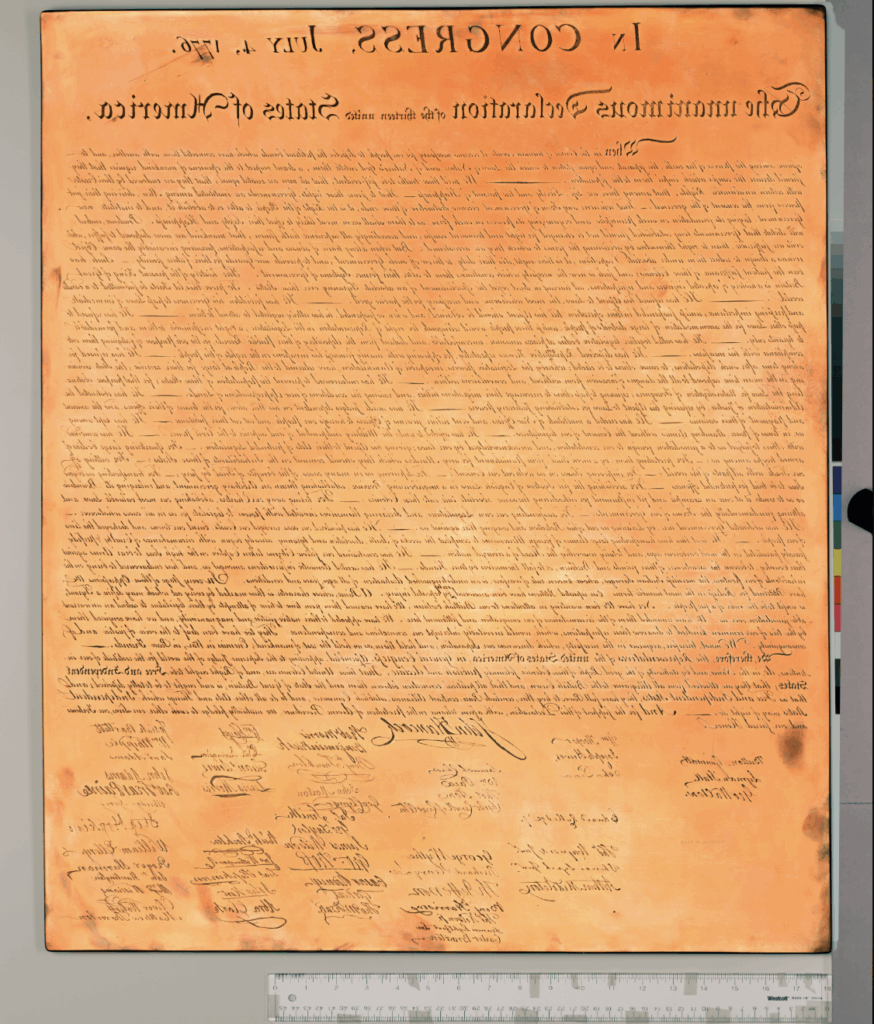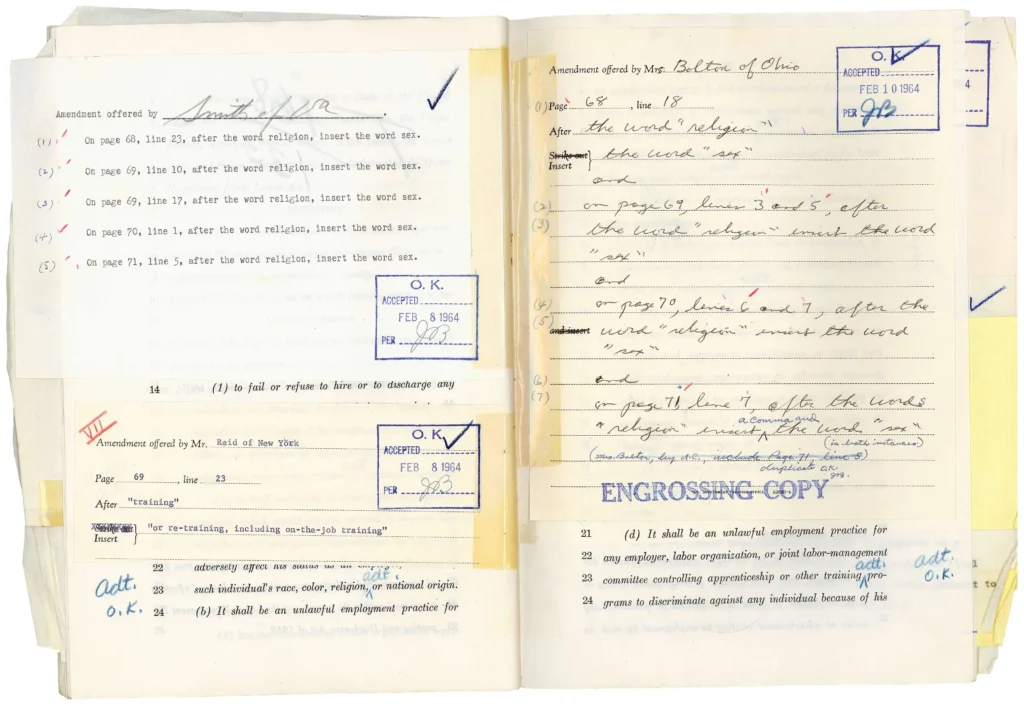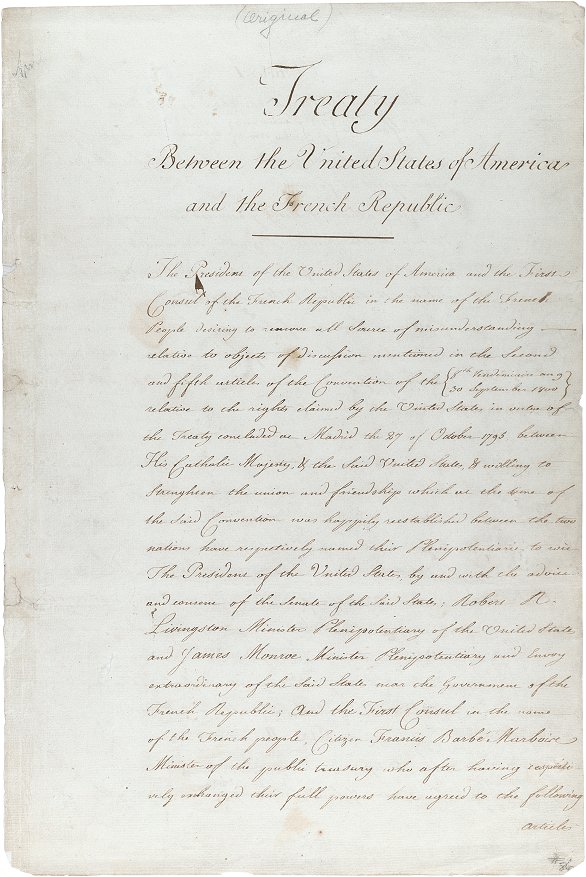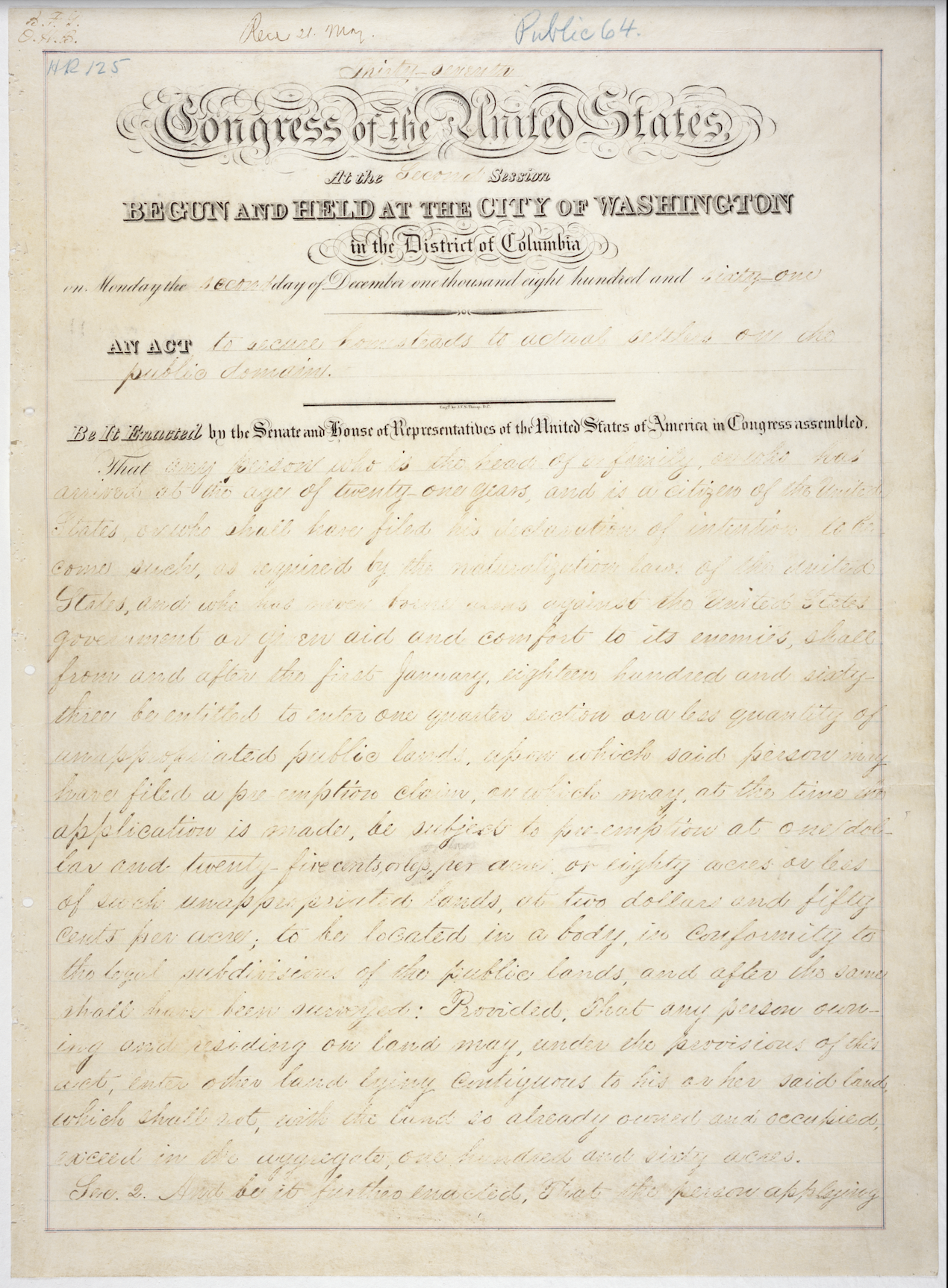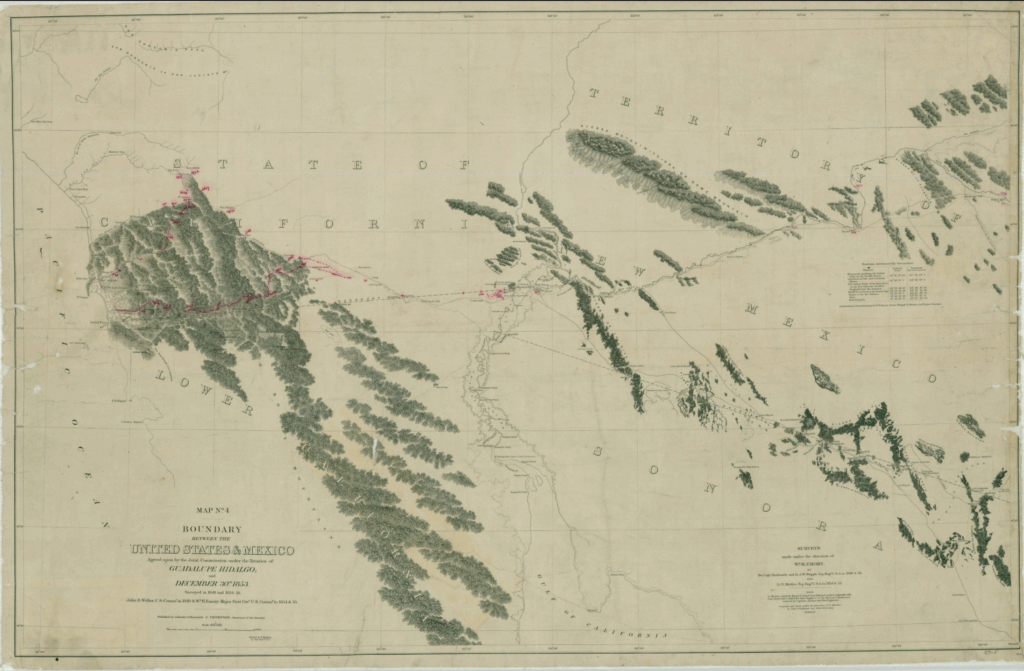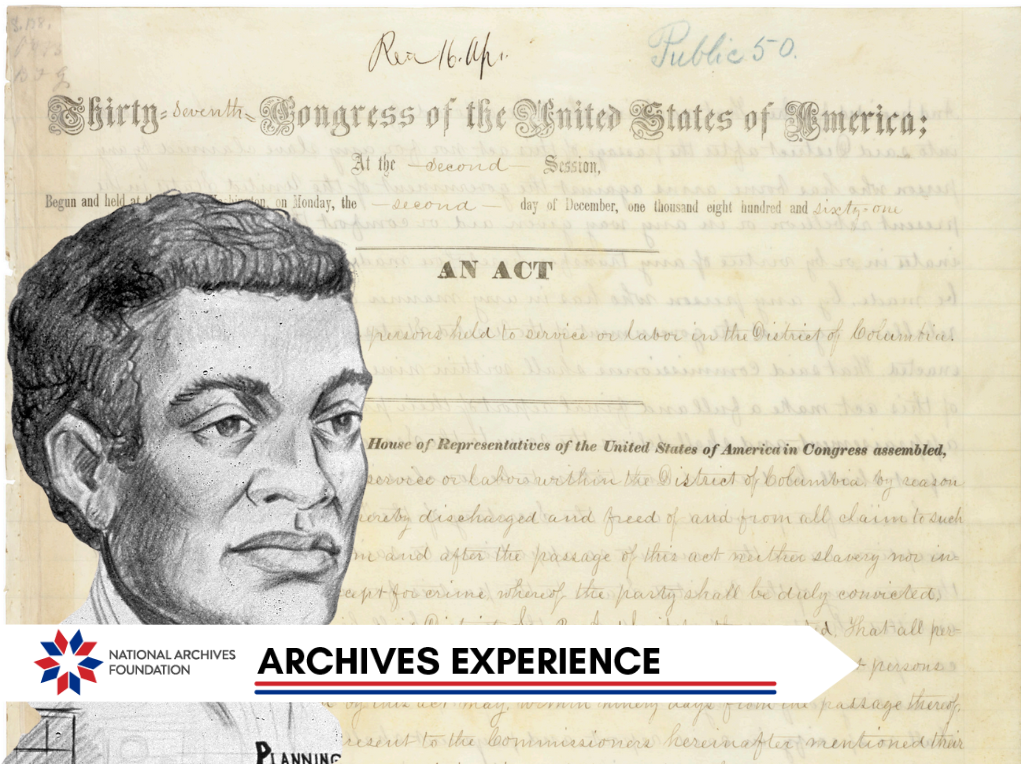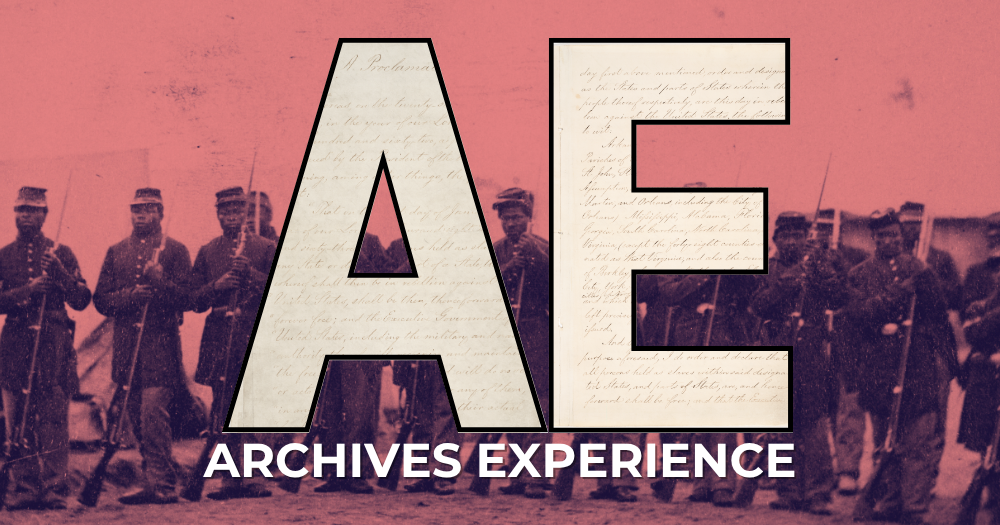Introducing: The American Story
The National Archives Museum will soon unveil the new 10,000-square-foot permanent exhibit titled The American Story. Opening October 23, it will showcase pivotal documents, original records and artifacts, and countless other treasures that tell our nation’s story, complete with interactive displays and state-of-the-art technology.
For those unable to visit Washington, D.C. right away, we’re offering a "virtual" first look in the lead up to this exciting reopening. Each week, we will take you through the various galleries, showcasing original records that will be featured. This week, we will walk you through the first two galleries: Chartering Freedom and Land and Home.
We’re grateful to Tom and Carol Wheeler for their generous support of the Chartering Freedom gallery, and to the Ting Tsung and Wei Fong Chao Foundation for making Land and Home possible.
The Declaration of Independence enshrined the nation’s founding ideals of freedom and equality. The Constitution recognized that the realization of those principles would require a “more perfect union.” The Emancipation Proclamation symbolized the progress to fulfill the ideals upon which the United States was founded. At the heart of this gallery are phygital displays of the Declaration of Independence and the Emancipation Proclamation, milestones in our ongoing dialogue about freedom in our country.
For more than 250 years, generations of Americans have championed the pursuit of freedom that has brought the nation closer to its revolutionary ideals. “Chartering Freedom” explores those ideals.
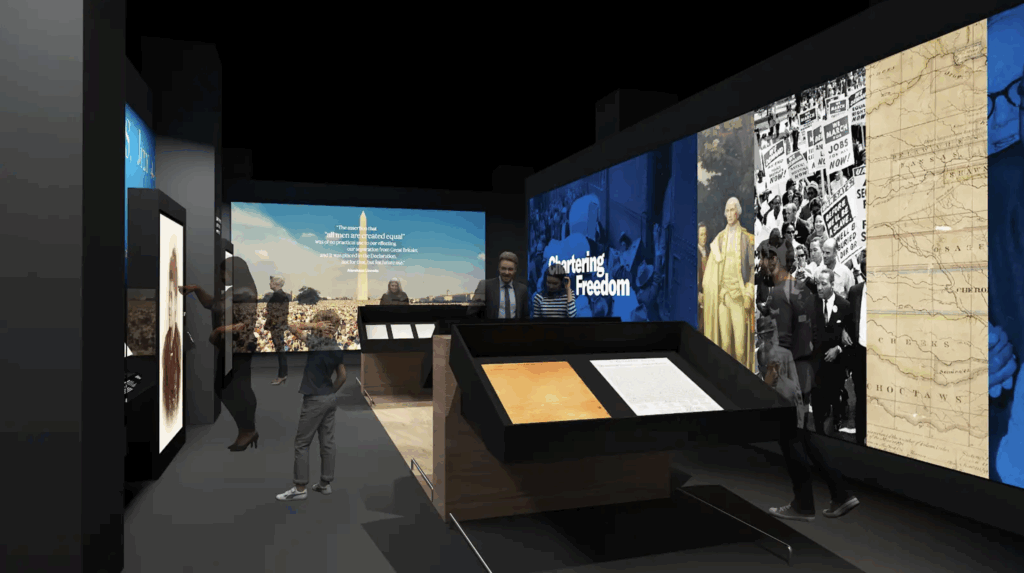
Rendering of "Chartering Freedom"
One of the centerpieces of this gallery, going back on display for the first time in several years, is William Stone’s 1823 copperplate engraving of the Declaration.
Commissioned in 1820 and completed by 1823, Stone’s engraving became the most reliable reproduction of the Declaration, as the original text faded over time.
Key documents explored in this gallery include the Emancipation Proclamation, the Civil Rights Act of 1964, and the official designation of November as "National American Indian Heritage Month."
"Land and Home" highlights the centuries of geographic expansion and migration across the US; experiences of settlers, immigrants, Indigenous peoples, free and enslaved Blacks, and the federal policies that impacted them.
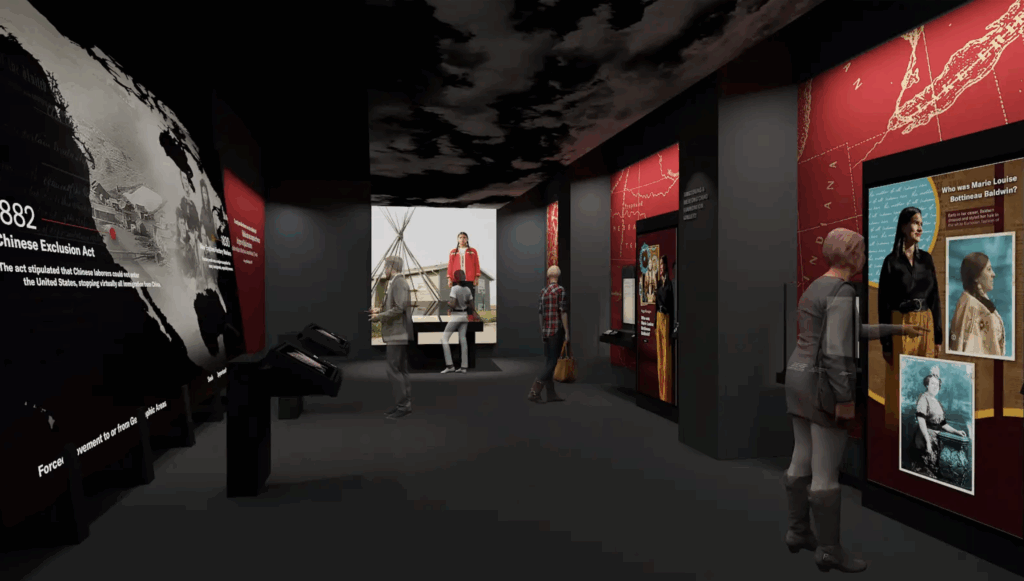
Rendering of "Land and Home"
The exhibit looks at key moments in American expansion, such as the Louisiana Purchase in 1803, which nearly doubled the size of the nation. For the first time in over a decade, pages one and seven of the original treaty between the U.S. and the French Republic will be on display.
The story of westward expansion is one of bold risk, exploration, and uncharted territories. Lands originally inhabited by Native peoples and settled by European empires became part of America as trade routes and new opportunities spread across the country. As changing boundaries reshaped the nation, people and the communities they built showed courage and resilience. Their stories survive here at the National Archives through maps, treaties, and laws like The Homestead Act.
Stay tuned as this is just the beginning; each upcoming edition of the Archives Experience newsletter will give you exclusive sneak previews from the other captivating galleries within The American Story. From artifacts to the people behind it all, we'll continue to take you behind the scenes, revealing new treasures and stories that deepen our understanding of America’s past and present.
Related Content
